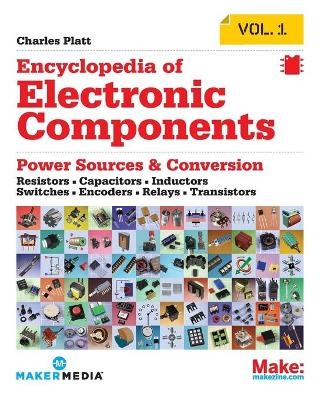
Encyclopedia of Electronic Components
O'Reilly Media, Inc, USA (Verlag)
978-1-4493-3389-8 (ISBN)
Convenient, concise, well-organized, and precise
Perfect for teachers, hobbyists, engineers, and students of all ages, this reference puts reliable, fact-checked information right at your fingertips—whether you’re refreshing your memory or exploring a component for the first time. Beginners will quickly grasp important concepts, and more experienced users will find the specific details their projects require.
- Unique: the first and only encyclopedia set on electronic components, distilled into three separate volumes
- Incredibly detailed: includes information distilled from hundreds of sources
- Easy to browse: parts are clearly organized by component type
- Authoritative: fact-checked by expert advisors to ensure that the information is both current and accurate
- Reliable: a more consistent source of information than online sources, product datasheets, and manufacturer’s tutorials
- Instructive: each component description provides details about substitutions, common problems, and workarounds
- Comprehensive: Volume 1 covers power, electromagnetism, and discrete semi-conductors; Volume 2 includes integrated circuits, and light and sound sources; Volume 3 covers a range of sensing devices.
Electronics is once again a popular topic. Today, students, hobbyists, DIY enthusiasts, artists, and engineers are pushing the limits by making all sorts of cool devices. But when you want to learn about a particular electronic component, where do you go? To the Encyclopedia of Electronic Components, Volume 1. This handy full-color reference guide provides everything you need to know: how a component works, its typical uses, and how you can use it in your project. Forget the manufacturer's datasheets and turn to a source that offers accessible information and straightforward advice you can use. Learn about hundreds of popular components, including power sources, switches, transceivers, and sensors Get detailed photos that go beyond the sketches found in typical datasheets Know what to avoid so you don't trash the component or your project
Charles Platt became interested in computers when he acquired an Ohio Scientific C4P in 1979. After writing and selling software by mail order, he taught classes in BASIC programming, MS-DOS, and subsequently Adobe Illustrator and Photoshop. He wrote five computer books during the 1980s. He has also written science fiction novels such as The Silicon Man (published originally by Wired books) and Protektor (from Avon Books). He stopped writing science fiction when he started contributing to Wired magazine in 1993, and became one of its three senior writers a couple of years later. Charles began contributing to Make magazine in its third issue and is currently a contributing editor. Make: Electronics is his first book for Make Books. Currently he is designing and building prototypes of medical equipment in his workshop in a northern Arizona wilderness area.
| Erscheint lt. Verlag | 4.12.2012 |
|---|---|
| Zusatzinfo | col. Illustrations |
| Verlagsort | Sebastopol |
| Sprache | englisch |
| Maße | 203 x 248 mm |
| Gewicht | 689 g |
| Themenwelt | Informatik ► Theorie / Studium ► Künstliche Intelligenz / Robotik |
| Informatik ► Weitere Themen ► Hardware | |
| ISBN-10 | 1-4493-3389-3 / 1449333893 |
| ISBN-13 | 978-1-4493-3389-8 / 9781449333898 |
| Zustand | Neuware |
| Haben Sie eine Frage zum Produkt? |
aus dem Bereich


